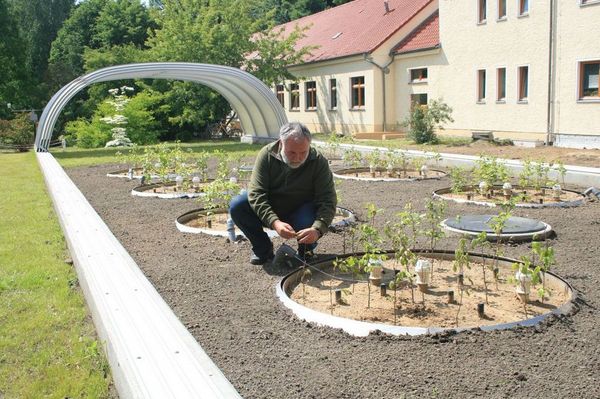Expertise
Scots pine and beech: How do different provenances respond to drought?
Mirko Liesebach and Jürgen Müller | 20.06.2022
When summers become dryer due to climate change, trees are also increasingly stressed. Forest researchers are testing the suitability of different pine and beech provenances with differing approaches.
Along with climate change an increase of extreme weather events is expected; e.g., drought, heat waves, windstorms. Such events have a strong effect on the growth and survival of our forest stands. The most important question is the choice of suitable species. However, because of the huge intra-specific variation, the question of the provenance is obligatory.
An experiment initiated with different progenies of Scots pine of different origin in 1982 by the International Union of Forest Research Organisations (IUFRO) clearly shows the large intra-specific variation. Together with the Thünen Institute of Forest Genetics, the analysis was performed by the Bavarian Office for Forestry (LWF) and the University of Munich.
Results Scots pine
For our analysis, we choose 11 provenances from the IUFRO provenance trial, which was established on two German plots near Waldsieversdorf (east of Berlin) and Bensheim (north of Mannheim) in the mid-1980s. Both sites consisted of secondary podsol on pure sand. The site at Waldsieversdorf is characterized by a yearly average temperature of 8.7 °C and a yearly average precipitation of 538 mm at the warm-dry border of the natural distribution area, while Bensheim, with 10.7 °C yearly average temperature and a yearly average precipitation of 603 mm, is located outside the climate envelope of Scots pine. The average vegetation period at Bensheim is extended by 33 days over that at Waldsieverdorf.
Distinct differences in growth performance could be ascertained between the provenances. The diameter increment was found to depend on the water availability during May to July, while height growth was influenced by the water deficit during May.
The reaction to drought depended much on the time and duration of the drought occurrence. The results indicate the local German provenances to be better adapted. By multivariate analysis we could identify well-performing provenances with low climatic sensitivity and high resilience against drought events. Also, the German provenances proved superior in these analyses. Provenances from Poland and France were also above average, whereas northern European provenances were inferior.
These results document the necessity to consider the question of provenance when discussing adaptation and adaptability to cope with climate change.
Trial lay-out Beech
Throughout Germany the damageable coniferous forests shall be conversed into mixed forests. Special emphasis is placed on the European beech, one of the most important tree species in natural forests. The beech is widespread in Central Europe and well adapted to the regional climatical conditions. At the Thünen Institute of Forest Ecosystems we test selected origins on their drought tolerance.
The experiments take place in the open field laboratory "Drylab". With this laboratory we can investigate the reaction of young trees on drought under field conditions (=> film (in German)).
For the first run the Drylab was planted with young beech from Germany and Poland, which are adapted to different climatic conditions. The most important tree species in Germany’s near to nature forests is the European beech. It also plays an important role for the forest management in the future. With the experiment we want to test which beech provenience copes best with the climate conditions in the future.
Especially young trees have a special significance, because they grow fastest and are most sensitive to environmental stress because of their shallow root system. The experiment is scheduled to run about five years.









